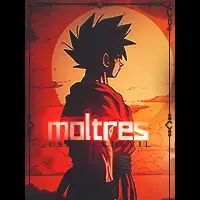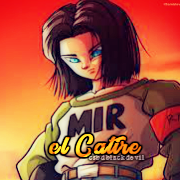Other groups
Journalists
VGame Reviewers
-_-Moltres-_- last won the day on February 5
-_-Moltres-_- had the most liked content!
About -_-Moltres-_-
- Birthday 20/08/2007
Title
-
-_-Moltres-_-
Contact
-
Yahoo
https://www.yahoo.com/
-
Instagram
https://www.instagram.com/hayyatali835/
-
YouTube
https://www.youtube.com/channel/UC57hAqs5gHoDa5GGvLyyWWQ/featured
Informations
-
Steam
https://steamcommunity.com/profiles/76561199132423738
-
Gender
Male
-
Interests
Sleeping >3
-
City
Karachi <3
Recent Profile Visitors
12,314 profile views
-_-Moltres-_-'s Achievements
-
The Samsung Galaxy S26 Ultra is set to redefine the standards of smartphone displays, introducing a suite of advanced technologies that aim to elevate user experience. With innovations such as the M14 material, Color on Encapsulation (COE) technology, and the removal of the polarizer layer, Samsung is pushing the boundaries of brightness, efficiency, and design. However, these advancements come with potential trade-offs, particularly for S Pen users, raising questions about how Samsung balances innovation with practical functionality.Innovative Display Features The Galaxy S26 Ultra’s display represents a significant leap forward in smartphone technology, incorporating several new features: M14 Material: This next-generation material builds on the M13 used in previous models, offering improved brightness, enhanced color accuracy, and greater power efficiency. These improvements are designed to deliver a more vivid and energy-efficient display experience. COE Technology: By eliminating the polarizer layer, COE technology enables brighter displays, richer colors, and reduced power consumption. Additionally, this innovation contributes to a thinner and sleeker screen profile, enhancing the overall design of the device. These advancements position the Galaxy S26 Ultra as a leader in display technology for 2025. Early reports suggest the device could surpass the 3,300-nit brightness benchmark set by competitors like Apple’s iPhone 17 and Google’s Pixel 10 series. However, these innovative features may be exclusive to the Ultra model, with the standard Galaxy S26 and S26 Edge potentially retaining the older M13 material. This differentiation could create a divide in user experience across the Galaxy S26 lineup. Durability Meets Innovation The integration of COE technology not only enhances the visual performance of the Galaxy S26 Ultra but also contributes to its durability. By reducing strain on the screen, this innovation is expected to extend the display’s lifespan, making it more resistant to wear and tear over time. For users investing in premium devices, this added durability aligns with expectations for long-term reliability and value. The combination of innovative technology and robust design underscores Samsung’s commitment to delivering a premium user experience. Potential S Pen Challenges While the Galaxy S26 Ultra’s display innovations are undeniably impressive, they may introduce challenges for S Pen users. The removal of the polarizer layer and potential changes to the digitizer layer, which is essential for S Pen functionality, could impact the stylus’s responsiveness and accuracy. Samsung has encountered similar issues with its Galaxy Z Fold series, where the absence of a dedicated digitizer layer affected S Pen performance. For users who rely on the S Pen for productivity, creativity, or precision tasks, this potential compromise could be a significant drawback. Long-time Galaxy Note and Ultra users may find this change particularly concerning, as the S Pen has been a defining feature of Samsung’s flagship devices. How Samsung addresses these concerns will be critical to maintaining its loyal user base. Competitive Landscape The Galaxy S26 Ultra enters a highly competitive market, where flagship devices from Apple and Google are setting new benchmarks in display technology. iPhone 17: Apple’s latest flagship is renowned for its industry-leading peak brightness, offering a visually stunning display experience. Pixel 10: Google’s Pixel series continues to excel in color accuracy, delivering vibrant and true-to-life visuals. Samsung’s decision to reserve its most advanced display technology for the Ultra model could give it a competitive edge in the premium segment. However, this strategy may leave the standard Galaxy S26 and S26 Edge models at a disadvantage, potentially alienating users who seek innovative features at a more accessible price point. Balancing innovation across the product lineup will be crucial for Samsung to maintain its market position. Implications for the Market The Galaxy S26 Ultra’s innovations have the potential to reshape user expectations for flagship smartphone displays. Its advancements in brightness, efficiency, and design set a high bar for competitors, challenging them to match or exceed these features in their own devices. However, the success of the Galaxy S26 Ultra will depend on Samsung’s ability to address user concerns, particularly regarding S Pen compatibility and the exclusivity of its advanced features. By limiting these innovations to the Ultra model, Samsung risks creating a divide among its user base. While the Ultra model may appeal to tech enthusiasts and premium users, the standard models could struggle to compete with rival devices that offer advanced features at a lower price point. This strategy highlights the growing segmentation within the flagship smartphone market, where manufacturers must carefully balance innovation, pricing, and user needs. The Future of Smartphone Displays The Samsung Galaxy S26 Ultra represents a bold step forward in display technology, using M14 material, COE technology, and the removal of the polarizer layer to deliver unmatched brightness, efficiency, and design improvements. These innovations position the Ultra model as a leader in the 2025 flagship smartphone market, setting new standards for visual performance and energy efficiency. However, the device’s success will ultimately depend on how well Samsung addresses the challenges posed by these advancements. For S Pen users, the potential impact on stylus functionality could be a deciding factor. Additionally, the exclusivity of these features to the Ultra model may influence consumer perceptions of the Galaxy S26 lineup as a whole. As the smartphone market continues to evolve, the Galaxy S26 Ultra’s innovations could serve as a benchmark for future devices, shaping the direction of display technology in the years to come. https://www.geeky-gadgets.com/samsung-galaxy-s26-ultra-details-3/
-
WhatsApp is finally rolling out its highly requested message translation feature to Android and iPhone, a new tool that allows you to translate incoming messages into your preferred language. Meta unveiled the new WhatsApp tool via a blog post, which comes months after Apple’s Live Translation feature in Messages in iOS 26. At the moment, WhatsApp’s translation capabilities are coming to Android and iPhone, so we don’t know if the same will apply to WhatsApp for the web or its Mac and Windows apps in the future. To enable a translation in a WhatsApp message, all you have to do is long-press an incoming message and select the new ‘Translate’ option from the context menu, and then select the language you want the message to be translated from or to. You can also download your most-used languages for future translations.One of the perks of this new tool is that it’s not limited to 1:1 conversations, and can be used in group chats and even Channel updates. Meta has also revealed that translations occur on-device, as opposed to the cloud, protecting your privacy. As for language availability, WhatsApp is starting small. For iPhone users, translations will be available in over 19 languages to start with. In the case of Android, only six languages (English, Spanish, Hindi, Portuguese, Russian, and Arabic) will be available with more to come, however, Android users will get access to an extra benefit that iPhone users won’t. Thread translations are exclusive to Android Despite the limited language options for Android users, WhatsApp is making up for this with thread translations, allowing you to translate an entire message thread instead of translating them one by one, which iPhone users will still have to do. When you enable automatic translation for chat threads, all future incoming messages in that conversation will be translated – saving you loads of time with future translations.The arrival of message translations marks a significant change in WhatsApp’s ecosystem, though other messaging platforms introduced similar tools a while back. WhatsApp users have been asking for a translation feature for a few years, and until now, they have had to seek third-party solutions such as Swift Translate and Todalingua to solve their translation problems. With message translations, WhatsApp has shared that it “hope(s) this feature helps break down language barriers and allows users to connect more deeply with loved ones and communities around the globe”. It’s a small launch for Android users at the moment, but is likely to grow as more users get used to it. https://www.techradar.com/computing/software/whatsapp-users-have-been-begging-for-message-translations-for-two-long-years-and-now-its-finally-here
-
The Ryzen 3 5100 is among the processors known to exist but not previously observed in person. That situation has now changed, as hardware leaker momomo_us has shared a photograph confirming the existence of the Ryzen 3 5100, which was previously regarded as a unicorn in hardware circles. The quad-core processor with simultaneous multithreading (SMT) originates from AMD's long-gone Zen 3 days, specifically from the Ryzen 5000G series (codenamed Cezanne). Typically, these Cezanne series chips are equipped with Vega graphics; however, the Ryzen 3 5100, along with the Ryzen 7 5700 and Ryzen 5 5500, belongs to a distinctive subset that does not include integrated graphics. This absence is evidenced by the processor model names, which lack the "G" suffix. As depicted in the photograph, the Ryzen 3 5100 possesses an Ordering Part Number (OPN) code of 100-00000456, which appears somewhat fictitious as it is not readily available in any known sources. AMD does not list the Ryzen 3 5100 on its official website, although occasional references to OEM components can sometimes be found there. The copyright year associated with the Ryzen 3 5100 is 2020, suggesting that the initial production of the chip commenced in that year. This timeframe is consistent with the Cezanne series.Confusion frequently arises regarding the Ryzen 5000G series and the primary Ryzen 5000 (codenamed Vermeer) series, due to AMD's similar branding for both series. Certain SKUs within the Vermeer lineup, such as the Ryzen 5 5600 or Ryzen 7 5800, lack a suffix, which may lead to misunderstandings, such as perceiving the Ryzen 3 5100 as a Vermeer processor. Although Cezanne and Vermeer share similarities, including the use of Zen 3 execution cores and the AM4 socket, they are inherently different. Cezanne employs a monolithic design, whereas Vermeer utilizes AMD's chiplet architecture. According to listings from motherboard manufacturers, the Ryzen 3 5100 is confirmed to feature the monolithic Cezanne die. The Ryzen 3 5100 serves as the direct successor to the previous Ryzen 3 4100 (codenamed Renoir). The enhancements encompass a transition to the Zen 3 core architecture, an increase of 200 MHz in boost clock speed, and a doubling of the L3 cache size. Alternatively, from another perspective, the Ryzen 3 5100 can be regarded as an underclocked variant of the Ryzen 3 5300G, distinguished by a 200 MHz lower base clock and the absence of integrated graphics. The Ryzen 3 5100 is an OEM processor, which largely explains why it took so long for it to smile for the camera. However, make no mistake, the Zen 3-powered chip has likely been available for purchase in China for some time now. With sufficient knowledge of where to search, one can almost invariably locate various items in China, including unreleased hardware, engineering samples of upcoming processors, or OEM components. https://www.tomshardware.com/pc-components/cpus/amd-keeps-am4-platform-on-life-support-with-2020-era-zen-3-cpu-ryzen-3-5100-surfaces-nine-years-after-am4-launch
-
While the idea of “console wars” might have shifted to a less competitive battle, sales and general engagement indicate Xbox is lagging behind its competitors. However, there is one area in which it’s still outlasting its rivals – the variety and number of different games that players are playing on these consoles each month. This is no doubt thanks to one of the most profitable decisions Microsoft has made – Game Pass – which clearly continues to be a driving vehicle behind keeping players interested Xbox Users Play More Games Than Other Consoles With the rising costs of games making individual copies a considerable expense, having a subscription service that provides access to other titles will naturally lead players sampling a wider variety of games. What is less clear, however, is why Game Pass seems to be more successful at this than PlayStation’s subscription service – PlayStation Plus. On Xbox in August 2025, Xbox users were found to have played 5.7 games on average. This is compared to 3.7 on PlayStation and 4.5 on Steam. These findings suggested that Game Pass subscribers were more active than that of PlayStation Plus, who play two games fewer on average a month by comparison. The Cost of Gaming This likely reinforces some of the benefits of Game Pass, such as allowing players to play a greater variety of games without needing to spend money on each one, making the medium as a whole more accessible. However, this is not something that comes without caveats, for there’s been a lot of discussion lately about how damaging Game Pass is to the industry’s sustainability, with smaller developers increasingly marginalised. Xbox Users Play For Less Time While Xbox might be excelling in this regard, though, Xbox users spend less time playing than those on PlayStation or Steam. In August, this averaged at 7.7 hours per person on Xbox, 12.7 on PlayStation and 11.9 on Steam. If you look at the sales numbers per console, Xbox lags behind again, with PlayStation 5 sales over 80 million and that of Xbox Series X/S around 30 million. The Nintendo Switch 2 had reportedly sold 6 million as of August 2025, which was only two months after its release. https://www.gameshub.com/news/article/xbox-game-pass-more-games-per-month-2806309/
-
The world of mobile gaming is brilliantly illuminated by anime-style titles, offering console-quality experiences right in our pockets. These games combine captivating art, deep storytelling, and engaging mechanics to create immersive worlds. For players looking to enhance their journey, understanding the landscape and knowing where to go for a secure game top up is key to unlocking the full potential of these digital adventures. What Makes a Great Anime Mobile Game? Before diving into the list, it’s important to know what separates the good from the legendary. Three core pillars define a top-tier anime mobile game: Stunning Art and Animation: The game must be visually compelling, featuring beautiful character designs, vibrant worlds, and smooth animations that faithfully capture the essence of anime. Compelling Story and Characters: A great narrative with well-developed, relatable characters is crucial. Players should feel invested in the world and motivated to see the story through. Engaging and Strategic Gameplay: Whether it’s real-time combat, tactical turn-based battles, or team-building strategy, the gameplay loop must be satisfying and offer depth beyond simple tapping. Top Contender: Wuthering Waves – A New Benchmark Kicking off our list is the sensational new action RPG, Wuthering Waves Top Up. Developed by Kuro Games, this title has quickly risen to prominence by offering a polished open-world experience with a heavy focus on fast-paced, fluid combat. Its post-apocalyptic world is beautifully rendered, and its unique “Echo” system allows players to absorb the abilities of defeated enemies, adding a fantastic layer of strategy to exploration and combat. For those invested in this incredible world, securing a Wuthering Waves Top Up is a common way to acquire new characters and weapons to master its challenging content. Its release has set a new standard for what players expect from mobile action games. Beyond the Open World: Diverse Genres to Explore While open-world RPGs dominate the conversation, the anime mobile genre is incredibly diverse. For players seeking a different pace, there are outstanding options. Tactical RPGs like Fire Emblem Heroes offer grid-based combat that rewards careful planning. Rhythm games such as Project Sekai bring po[CENSORED]r Vocaloid music to life with engaging tap mechanics. Even within the gacha framework, titles like Azur Lane focus more on collection and lighter automation. This variety ensures that no matter your preferred playstyle, there's an anime game that perfectly fits your taste, and each can benefit from a reliable game top up source to collect favorite characters. https://www.techloy.com/best-anime-mobile-games-top-picks-what-makes-them-shine/
-
During its pre-TGS showcase stream earlier today, Capcom announced that the next major Monster Hunter Wilds update, featuring Final Fantasy 14 collaboration content, will launch on Monday, September 29. First revealed back in August, Title Update 3 will add Eorzea-themed hunts, equipment, and cosmetics, which—while appreciated—still leaves Wilds' glaring performance issues largely unaddressed. The headlining addition in TU3 is Omega Planetes, the FF14 incarnation of Final Fantasy's recurring mechanical superboss who's somehow managed to hop dimensions into the Monster Hunter setting. Considering Omega is a superweapon whose prime directive is dragon killing, its presence presumably doesn't bode well for Monster Hunter's largely lizard-based ecology, so it's up to the hunters to boot it back to its proper reality. Omega Planetes descends upon the Forbidden Lands in Free Title Update 3, heralding the arrival of the Monster Hunter Wilds x FINAL FANTASY XIV Online Special Collaboration!@FF_XIV_EN Themed weapons, armor, cosmetics, special actions and more await you from September 29! pic.twitter.com/lBrAPH0Y6sSeptember 24, 2025Like the Behemoth crossover hunt from Monster Hunter: World, the Omega Planetes fight will feature FF14 UI flourishes, battle mechanics, and AoE hazards ripped right out of raid encounters. In Omega's case, this seems like it'll entail navigating a hellscape of lethal beam weaponry, which feels appropriate based on my recollections of the FF14 raids.Alongside Omega, the collaboration update will also add equipment and items that'll bring even more FF14 mechanics into Wilds. A Dark Knight-themed Bale Armor set will give hunters access to The Blackest Night, an FF14 Dark Knight ability that erects a damage-absorbing barrier and counteracts with a heavy attack when it's destroyed. Hunters can also obtain a Soul of the Pictomancer item, which will let them use FF14 Pictomancer spells while it's carried in the item pouch. There'll also be a variety of other cosmetics available to unlock, including gestures, Morbol-themed palico armor, a Chocobo seikret skin, and a weapon pendant that'll make a cactuar follow your hunter around. https://www.pcgamer.com/games/action/monster-hunter-wilds-ff14-crossover-update-and-omega-hunt-lands-on-monday-but-were-still-waiting-until-december-for-those-much-needed-performance-improvements/
-
This is The Stepback, a weekly newsletter breaking down one essential story from the tech world. For more on the intersection of gaming and technology, follow Sean Hollister. The Stepback arrives in our subscribers’ inboxes at 8AM ET. Opt in for The Stepback here. How it started They used to be called the “console wars,” and to the victor went the spoils. When Sony’s PlayStation and PlayStation 2 dominated the Sega, Nintendo, and Microsoft competition, selling over a hundred million boxes into our living rooms — each! — they created a profitable virtuous cycle. More consoles meant selling more games, which meant attracting more developers to make even more games, which meant big dollar signs for Sony. The box will continue to be the tip of the spear, but it’s no longer the point. But to getThis is The Stepback, a weekly newsletter breaking down one essential story from the tech world. For more on the intersection of gaming and technology, follow Sean Hollister. The Stepback arrives in our subscribers’ inboxes at 8AM ET. Opt in for The Stepback here. How it started They used to be called the “console wars,” and to the victor went the spoils. When Sony’s PlayStation and PlayStation 2 dominated the Sega, Nintendo, and Microsoft competition, selling over a hundred million boxes into our living rooms — each! — they created a profitable virtuous cycle. More consoles meant selling more games, which meant attracting more developers to make even more games, which meant big dollar signs for Sony. The box will continue to be the tip of the spear, but it’s no longer the point. But to get those dollar signs spinning and keep them spinning, console makers greased the wheels. The console wars were initially fought with exclusive games, tempting you to buy the only system that could play Final Fantasy VII, or Super Mario 64, or Halo. Later, the “wars” enlisted your friends, too. Microsoft turned the tables in 2005 with the Xbox 360, which made both local and online multiplayer easier than on PlayStation, just in time for the explosion of online gaming and four-player couch titles. Were you really going to buy the “wrong” console and miss out on games with your pals? What if they insisted on PlayStation? The world’s internet forums erupted in debate about the merits of each brand and technical capabilities of each console. But a funny thing happened after Sony introduced the PlayStation 3, the most powerful hardware yet. Subscribe to The Verge to continue reading. More in Column The strongest argument for smart glasses is accessibility The strongest argument for smart glasses is accessibility James Cameron on AI: it’s ‘just as creative’ as people, but with no ‘unique lived experience’ James Cameron on AI: it’s ‘just as creative’ as people, but with no ‘unique lived experience’ I sat down with Mark Zuckerberg to try Meta’s impressive new Ray-Ban Display glasses I sat down with Mark Zuckerberg to try Meta’s impressive new Ray-Ban Display glasses Charlie Kirk’s death got complicated by gamer brainrot Charlie Kirk’s death got complicated by gamer brainrot Phone batteries are getting more compact, but the US is missing out Phone batteries are getting more compact, but the US is missing out It’s time for Meta to add a display to its smart glasses It’s time for Meta to add a display to its smart glasses Advertiser Content From Sponsor Logo This is the title for the native ad Top Stories 7:20 AM PDT Trump’s H-1B visa fee isn’t just about immigration, it’s about fealty 5:00 AM PDT The best smart glasses got a little better Sep 20 The US government is taking a second stab at breaking up Google Sep 20 Henry Halfhead is full of heart Sep 20 Republicans’ political purge is just getting started 31 minutes ago The foldable iPhone might look like two iPhone Airs stuck together Contact Tip Us Community Guidelines About Ethics Statement How We Rate and Review Products Manage Privacy Settings Terms of Use Privacy Notice Cookie Policy Licensing FAQ Accessibility Platform Status © 2025 Vox Media, LLC. All Rights Reserved Continue reading The Stepback with a Verge subscription Tech season sale: For a limited time, get unlimited access https://www.theverge.com/column/781303/microsoft-sony-playstation-xbox-future-of-gaming-console
-
Anniversary login bonuses sweeten the deal further with daily dice, cosmetics, and summoning materials, while the 7-day campaign offers stamina boosts and Scholar Scrolls. You can also collect Glimmercards through daily quests to draw prizes and unlock server-wide milestones like an exclusive avatar frame. Get yourself some more freebies by redeeming these Dragonheir: Silent Gods codes! Season two isn’t just about rewards, though; it marks the debut of the long-requested skin system too. The first-ever Legendary-grade Hero Skin will arrive during the anniversary, opening the door to flashier builds. Fans of the Dungeons & Dragons crossover can also look forward to Echoes of the Sleepless: Phase II, fe aturing exclusive characters and a collaborative boss encounter.Dragonheir: Silent Gods may have recently relaunched, but the anniversary counter hasn’t reset. The RPG is ringing in its second anniversary in style with the launch of Season 2: Misty Sea Voyage. Starting today, you can set sail on new adventures, claim piles of rewards, and even meet a brand new hero inspired by Eastern mythology. Dragonheir: Silent Gods’ second anniversary event is packed with gifts from the start. Just logging in nets you Heliolite Dice, Starlight Stone Dice, Wyrmarrow, Essence of Creation, and a mountain of gold. Beyond that, completing the Season 2 Journey unlocks even more resources and three Legendary Heroes for free, including Alphanarsy, Gillian, and a mysterious new addition. If you’ve been waiting for fresh faces, the celebration introduces an SSR hero rooted in Eastern-style design. This character can be earned by diving into limited-time event challenges. On top of that, the Shattered Sorrow collaboration event dishes out dice, Wyrmarrow, and another chance to grab the new SSR hero. https://www.pocketgamer.com/dragonheir-silent-gods/second-anniversary/
-
Hatsune Miku's voyage through space has finally come to an end after 15 long years. The Japanese space probe Akatsuki has officially ceased operations, as reported by Automaton. The probe was originally launched on May 21, 2010, after famously being decorated with some 13,000 Hatsune Miku drawings and messages submitted by fans. The Japan Aerospace Exploration Agency (JAXA) sent the probe next door to Venus to study the planet's weather patterns and look for "signs of active volcanism." The probe also captured some stunning images of Venus that show the milky coffee hues of its atmosphere. JAXA reported that it lost contact with the probe in April 2024 and operations were officially terminated on Thursday. Akatsuki was the only operational probe specifically focused on studying Venus over the past ten years. The Akatsuki team announced the shut down in a post on X (formerly Twitter), as translated by Automaton: "We have concluded operations of the Venus probe Akatsuki. Since last year we have been attempting to restore communications, but determined that recovery would be difficult, and so we have drawn this chapter to a close. We sincerely thank everyone who has supported Akatsuki over the 15 years since its launch."Ahead of Akatsuki's launch in 2010, JAXA invited the general public to send in art and messages to get etched into the probe's aluminum balance weights. Fans of the voice synthesizer program Vocaloid, which (at the time) powered Hatsune Miku, saw the opportunity to send their favorite fictional pop star to the stars. They sent in over 13,000 drawings and messages to go on Akatsuki, turning part of the probe into a monument to Miku. JAXA let it fly (literally) and the Hatsune Miku art got to spend 15 long years orbiting Venus. While Venus may not have any robot friends flying around it at the moment, a few new missions are in the works. NASA is working on two probes, DAVINCI and VERITAS, both slated for launch in the early 2030s, and the European Space Agency is planning to send its EnVision probe to Venus sometime in the next decade, as well. https://www.pcgamer.com/gaming-industry/japans-space-agency-officially-ends-decade-plus-mission-that-carried-hatsune-miku-into-space-one-year-after-losing-probe-somewhere-above-venus/
-
The Samsung Galaxy S26 Ultra is expected in early 2026, and the handset will showcase a blend of innovative hardware upgrades and bold design choices. As the flagship model in the Galaxy S26 series—which also includes the S26 Pro and S26 Edge—the Ultra aims to redefine standards in performance and photography. However, its design, particularly the prominent camera bump, has sparked debate among users and critics alike. If you’re considering an upgrade, here’s a detailed exploration of what the Galaxy S26 Ultra and its siblings could bring to the table when they launch next year.Design: Balancing Functionality and Aesthetics The Galaxy S26 Ultra’s design has become a focal point of discussion, largely due to its large camera bump. While this design element accommodates advanced camera technology, it disrupts the phone’s otherwise sleek and modern profile. For some, this trade-off is justified by the enhanced functionality, while others view it as a step back in smartphone aesthetics. The Galaxy S26 Pro adopts a similar design language but in a more compact form factor, making it a practical choice for users who prefer smaller devices. On the other hand, the Galaxy S26 Edge takes a different route with flat edges and a minimalist design, drawing comparisons to the iPhone 17 Pro. This approach may appeal to Android users seeking a familiar aesthetic, but it has also raised questions about Samsung’s originality in design. Across the lineup, Samsung’s design choices reflect an effort to balance innovation with user preferences, though not without controversy. Performance: The Power of Snapdragon 8 Elite Gen 2 At the heart of the Galaxy S26 Ultra lies the Snapdragon 8 Elite Gen 2 processor, a chipset that delivers exceptional performance across various tasks. This global standard ensures faster app launches, seamless multitasking, and an enhanced gaming experience. For regions where Samsung offers the Exynos variant, performance may vary slightly, though Samsung continues to refine its in-house processors to remain competitive in the global market. The Galaxy S26 Pro and S26 Edge also feature the Snapdragon and Exynos split, depending on regional availability. While these models don’t match the Ultra’s top-tier specifications, they still offer reliable performance for everyday tasks, making them suitable for users with moderate usage needs. Whether you’re a power user or someone who values efficiency, the Galaxy S26 lineup provides options tailored to different performance requirements. Camera: Redefining Low-Light Photography The Galaxy S26 Ultra’s camera system is designed to excel in low-light photography, a feature that sets it apart from its predecessors. While it doesn’t introduce a completely new sensor, the wider aperture allows more light to reach the sensor, resulting in brighter and more detailed images in dim conditions. This enhancement is particularly appealing to photography enthusiasts who frequently capture nighttime or indoor shots. Across the Galaxy S26 lineup, Samsung maintains its reputation for imaging excellence. The S26 Pro and S26 Edge feature capable cameras that perform well in most scenarios, but they lack the Ultra’s advanced capabilities in challenging lighting conditions. For users who prioritize photographic versatility, the Ultra stands out as the clear leader in the series. Choosing the Right Model for Your Needs The Galaxy S26 Ultra is designed for users who demand top-tier performance and advanced camera features. If you’re upgrading from an older model like the Galaxy S24 or S25, the Ultra offers a significant leap in hardware and functionality. However, its bold design may not appeal to everyone, particularly those who prefer a more understated aesthetic. For users seeking a compact and affordable option, the Galaxy S26 Pro delivers solid performance without the premium price tag of the Ultra. Meanwhile, the Galaxy S26 Edge caters to Android users who appreciate a design reminiscent of the iPhone, offering a blend of familiarity and functionality. Each model in the Galaxy S26 lineup is tailored to meet specific user preferences, making sure there’s an option for everyone. Balancing Innovation and User Preferences The Samsung Galaxy S26 series represents a thoughtful balance between technological innovation and user-centric design. The Ultra leads the lineup with its Snapdragon 8 Elite Gen 2 processor and enhanced low-light photography capabilities, but its bold design choices may polarize opinions. The S26 Pro and S26 Edge provide alternatives for users with different priorities, whether it’s a compact form factor or a more familiar aesthetic. Ultimately, the right choice depends on your individual needs and preferences. Whether you prioritize innovative performance, advanced camera features, or a design that aligns with your personal style, the Galaxy S26 series offers a range of options to suit diverse requirements. With its combination of innovation and versatility, the Galaxy S26 lineup continues Samsung’s tradition of delivering smartphones that cater to a wide audience. https://www.geeky-gadgets.com/samsung-galaxy-s26-ultra-leaks-4/
-
It's been four years since Facebook renamed itself Meta in celebration of, or misguided enthusiasm for, the onrushing metaverse revolution. Except that the revolution failed to materialize. Turns out that while people were intrigued by the growing number of virtual reality headsets, consumers weren't enthused about living inside them, and even Meta now seems to admit that early experiences weren't great. "VR is evolving in new ways...It's tough to navigate, and we at Meta have a lot to learn as well, " said Samantha Ryan, Meta VP and Head of Metaverse Content, on Thursday during the Meta Connect developers keynote.Meta CTO Andrew Bosworth, who opened the session, echoed those comments, saying, "It's been a pretty choppy few years there," then he added with a smile, "but AI is gonna help level us up."Aside from all the new smart AI glasses (like the stunning Meta Ray-Ban Display that also gets a big lift from AI), the last two days have been somewhat surprising for their renewed focus on the Metaverse and Horizon Worlds, the vast environment Meta and its partners have been building in the virtual space. First, there are major updates coming to the programming platforms that developers use to build metaverse environments: Meta Horizon Engine & Meta Horizon Studio. Horizon Engine is notable because it replaces the widely used Unity engine for rendering these worlds. These tools are allowing for far more complex and realistic environments that support concert-numbers of people as virtual participants. An example shown more than once over the last two days was a virtual Sabrina Carpenter concert. She appears live on a video screen, and the audience is made up of thousands of VR avatars.Still, no advancement made me prick up my ears more than the new prompt-driven Build with AI world programming interface. It will let developers start with basic, foundational worlds and then, through prompts, add and adjust elements. Obviously, this is drastically simpler than writing code. It's the kind of AI tool that could speed up not only the creation of new worlds, but the ability to adjust them in positive ways based on user feedback. AI doesn't solve all of the Metaverse's ills. The Metaverse is still a proprietary environment you can only enter through a VR headset like Quest 3s. It's mostly boring unless you are engaged in a directed activity. In fact, gaming still remains the chief VR-based activity. One 2023 study found 72% of VR headset users are in it for immersive gameplay. Outside the Metaverse, I tried Deadpool VR in the Quest 3s. It's a fantastic demonstration of the gaming possibilities inherent in a virtual, interactive space. The game, by the way, is just as chaotic, bloody, and funny as the franchise. https://www.techradar.com/computing/virtual-reality-augmented-reality/the-metaverse-is-not-dead-and-ai-may-be-its-new-savior
-
Intel and Nvidia have been working on the jointly developed processors for client and data center products for about a year now as both companies see huge opportunities behind their Intel x86 RTX SoCs and custom Nvidia x86 data center processors. Although the Nvidia CEO Jensen Huang said in a press call that the Trump administration was pleased with the collaboration between two leading U.S. companies, it had nothing to do with it. Trump not involved "The Trump administration had had no involvement in this partnership at all," said Nvidia's Huang said, during the joint press conference with Nvidia on Thursday. "They would have been very supportive, of course. Today I had the opportunity to tell Secretary [of Commerce Howard] Lutnick and he was very excited and very supportive of seeing two American technology companies working together." The work began around a year ago, and preliminary agreements were reached by Intel's then-CEO Pat Gelsinger and Nvidia's Jensen Huang even before that. (A year ago, Joe Biden was president, though no one suggested his administration was involved, either.) Intel and Nvidia are working on custom data center CPUs that Nvidia will integrate into its AI platforms as well as GPU tiles that Intel will integrate into its upcoming client processors. In both cases CPUs and GPUs will use Nvidia's NVLink technology as an I/O interface. By now, there are three teams working together on the joint projects."The two technology teams have been discussing and architecting solutions now for probably coming out to a year," said Jensen Huang, chief executive of Nvidia. "The two architecture teams… Well, it is three architecture teams are working across... the CPU architecture, as well as product lines for server and PCs. The architecture work is fairly extensive, and the teams are really excited about the new architecture. The teams have been working for a while and we are excited about the announcement today." As Huang mentioned teams working on a CPU architecture as well as client and data center product lines, we figure out that Nvidia wants rather deep customizations of Intel's Xeons to meet the needs of its AI platforms. The involvement of a CPU architecture team highlights the depth of the partnership between Intel and Nvidia as well as indicates that the CPU company is implementing rather deep optimizations required by next-generation AI platforms. Given Nvidia's history with Grace and Vera CPUs (custom Arm) and the high bandwidth needs of its next-gen GPUs (e.g. Rubin, Feynman, post-Feynman, etc.), it is reasonable to expect tailored cache structures, memory IO, and coherency protocols on these x86 CPUs. Such a deep collaboration probably means that custom Intel processors will be used by Nvidia sometimes in the post-Vera Rubin platform era. We would certainly expect Nvidia's data center GPU team to work with Intel as well, but Huang never mentioned one during the call, probably because Feynman GPUs have already been defined by now. Yet, he mentioned that there are two more teams working on product lines for server and PC products, which probably points to data center system level architecture team on Nvidia's side as well as client CPU/system level architecture team on Intel's side. https://www.tomshardware.com/pc-components/cpus/teams-at-nvidia-and-intel-have-been-working-in-secret-on-jointly-developed-processors-for-a-year-the-trump-administration-has-no-involvement-in-this-partnership-at-all
-
The idea of carrying your savegame progress from one platform to another is becoming much more common these days, and Xbox wants to make this as simple as possible through a new innovation known as "PlayFab Game Saves" As detailed on the official Microsoft website, there are loads of apparent benefits for developers with this, and titles that are shipping in the Xbox ecosystem will be able to use PlayFab Game Saves free of charge when it's rolled out. Here's an overview along with that list of benefits: "We’re excited to announce the public preview of PlayFab Game Saves, a new service designed to make player data management easier, more robust, and more flexible, so you can deliver a frustration-free player journey." Connects player progress to your game instead of individual devices or platforms so they can continue their journey any time from any device. Eliminates the complexity of implementing cross-platform synchronization so you can focus on delivering great gameplay. Supports online and offline play with control of transitions between those states. Minimizes the chance of version conflicts by enabling flexible game save layout with clear dependency boundaries. Helps players seamlessly transition between devices and platforms to maintain a consistent point-of-progression. Provides contextual cues to assist players in making informed conflict-resolution and single-point-of-progression decisions, when needed. Delivers geo-aware cloud storage and fast synchronization to improve performance and reliability. Recovers players from bad state with support for version rollback (coming soon). Works with Xbox-provided background uploader and title-callable UI, where available. Right now, PlayFab Game Saves is in a limited public preview, but developers can already request access to it. The focus for the time being is just on the Xbox and Steam ecosystems, and the timing suggests Microsoft is particularly keen to support cross-saves with Steam in order to support the upcoming ROG Xbox Ally handheld. In fact, Microsoft even says that PlayFab Game Saves has been designed due to "the rapid growth of handheld adoption combined with the fact that the most engaged and valuable players tend to play across multiple devices and platforms". Of course, it's still early days for this innovation and it'll take some time before it bears fruit, but we're certainly glad to see Xbox helping out with cross-save integration - the more games that support it, the better! https://www.purexbox.com/news/2025/09/xbox-is-making-it-easier-for-games-to-implement-cross-saves-between-console-and-pc
-
Who doesn't love new games? We certainly do - there's just something about the exhilaration of a new title you can't wait to dive into, as the loading screen pops up and you enter a brave new world. Of course, new mobile games are a dime a dozen these days, and who has the time to scour the iPhone, iPad and/or Android stores to catch the latest title that drops? This is exactly why we've gathered a quick list of 5 new mobile games you should try this week, from undiscovered indie gems to high-profile AAA masterpieces. By the way, if you've got an unquenchable thirst for curated games you can obsess over each week, be sure to check out our NEW WEEKLY MOBILE GAMES hub, or join our lively community on Twitter or Discord.Welcome to Off The AppStore, a weekly feature with a twist. Namely, that while these - as with all the games we cover here - are games that you can play on your phone, they're ones that operate outside of the realms of the big two ways to play: The Google Play Store and the Apple AppStore. That means that there might be a bit of work required in downloading alternative AppStores or APKs, or that the games can simply be played in your phone browser. We'll make sure to detail that for each game, though. Anyway, read on to find a new game or experience to play Off The AppStore. As long as you have the pieces, you can turn anything into a puzzle. You'd be hard-pressed to find a genre that hasn't been turned into a puzzle, one way or another. It could be something as simple as matching blocks to as complex as collecting evidence to prove that your shady, unlikable client is actually innocent. But that's not what we're talking about today, because today it's all about slime. We're putting the debate of whether it's a solid or liquid on hold, because what we do know is that slime is sticky and can change its shape based on various factors. These are things that Niels de Rijk wants you to keep in mind when you decide to play Hungry Huey.You're in space! Or, at least an alien planet that seems to be po[CENSORED]ted by a variety of slime creatures, among which is the big, green, jolly Huey. He has summoned you to his planet to ask for your help because, truth be told, he's not the most capable slime out there. He's also extremely hungry and needs you to feed him. Luckily, there are tons of colourful slime blobs just waiting to be served up, and you have the means to do it.There will be a meter on the right side that will constantly tick down as Huey's hunger starts to grow rapidly. You can feed him by choosing one slime-type and then linking it to any adjacent (though never diagonally) slimes of the same type. The longer the link, the more Huey's hunger will be sated and the more points you'll earn. As you clear slime off the grid, more slime will drop in to fill the space so that you can plan more combos. Just be wary, as impassable areas can also appear, but you can get things back on track by popping helpful power-up bubbles. Hungry Huey is a cute little 2D pixel-art puzzler about feeding a slime by linking other same-type slimes into bigger and edible slimes. It requires a Game Boy Color Emulator to play, of which plenty are available for download. To add even more to the experience, there are three different game modes ready right from the start, with an additional fourth mode that you unlock through pure slime puzzling prowess. Now get out there and help Huey because it's slime time! https://www.pocketgamer.com/off-the-appstore/hungry-huey/
-
Hazelight Studios proved it could go the distance when It Takes Two sold an eye-watering 20 million copies and took home The Game Awards' Game of the Year, and follow-up Split Fiction is keeping the momentum strong. Not only did it sell a million copies in two days, it's also rapidly amassed glowing reviews and award nominations of its own—the latest of which was presented by the highest authority on videogames. That's right: his majesty Carl Philip, duke of Värmland and prince of Sweden. We all know that the good prince knows his GTA 5s from his Herzog Zweis, which makes it all the more galling that the Excellent Swedish Design award has never been given to a videogame before now. I suppose I can blame that on Svensk Form, or the Swedish Design Association, the non-profit which doles out the award annually. Split Fiction was one of a dozen recipients alongside not-videogames like the TP-7 field recorder by Teenage Engineering and a furniture collection called The King's Hat. It isn't possible to apply for the award, but Svensk Form's inclusion of game designer Bobbi A. Sand in the curation jury may have had something to do with the co-op platformer's nomination.I don't mean to suggest Split Fiction doesn't deserve the award—great games should be recognized as cultural achievements. Josef Fares' beaming smile next to the Swedish prince is a nice reminder that sometimes the games industry isn't all hellfire and torment. (Granted, I don't expect Split Fiction publisher EA to win any awards for laying off a chunk of its workforce earlier this year, but this is a positive article so I'll shut up.) Bully for Hazelight: Split Fiction is a rollicking good time. There's also a movie based on the game in development, but I'm not yet convinced it's real. https://www.pcgamer.com/games/action/in-yet-another-victory-lap-for-hazelight-studios-split-fiction-just-became-the-first-videogame-to-get-a-design-award-from-swedish-royalty/














![[X]pErT-](https://csblackdevil.com/forums/uploads/monthly_2025_07/SAVE_20250716_024517.thumb.jpg.abc60be20d840a9b4117d19e1559e8e7.jpg)



